VANCOUVER — Prodigious Yukon prospector Shawn Ryan is on the move again, but this time his sights are on Labrador. In June, Ryan staked 1,696 sq. km of claims over two greenstone belts in eastern Labrador and another region in western Labrador for their gold potential.
Ryan’s staking in Newfoundland and Labrador comes after he optioned his other land holdings in the Yukon to junior explorer G4G Capital — renamed White Gold (TSX: AEM; NYSE: AEM) — last September.

Shawn Ryan’s recently acquired claims in Labrador are highlighted in green-blue. Credit: The Northern Miner.
However, during a podcast recorded at the Yukon Mining Alliance’s Investment Conference in Dawson City in July, he told The Northern Miner his interest in Canada’s most eastern province began in 2014.
“Their geological survey invited me [to teach a course on prospecting], so I flew in and they showed me around,” he said. “The guys are just fantastic … they remind me of the geologists at the Yukon survey. They’ve been around for 25 years and have a lot of knowledge. Their database is excellent, going online to look at data is easy, and they offer good subsidy programs for explorers. That gave me the footing to know this was a good area to explore.”
Ryan said he began “sneaking around the island” after the visit, and evaluated big tracks of unclaimed ground looking for gold. By 2016, his attention focused along a structural trend of Marathon Gold’s (TSX: MOZ) 2.2 million oz. orogenic gold deposit.

Shawn Ryan’s eastern claims in Labrador cover gold anomalies associated with two greenstone belts and an intrusive complex. Another group of claims in the south fall along a juncture between a number of Archean to Proterozoic-aged cratons and host a number of copper and uranium occurrences. Credit: The Northern Miner.
“I didn’t want to let the cat out of the bag that I was in the province,” he said. “We made interesting correlations with soils and geophysics — enough that Stratton Resources bit the bullet and became interested.”
Stratton, since renamed Torq Resources (TSXV: TORQ), agreed to option the claims from Ryan after completing a $13.2-million private placement in February. Torq is directed largely by the technical team behind Auryn Resources (TSX: AUG; NYSE-MKT: AUG), and plans to drill gold anomalies in glacial till samples.

An intrusive complex along strike of the Florence Lake greenstone belt hosts the highest concentration of gold anomalies in Labrador’s regional stream sediment dataset. Credit: The Northern Miner.
“I staked so many claims in Newfoundland that their system crashed. It was down for two weeks,” Ryan said with a chuckle. “By then the word was out that Shawn was in Newfoundland, so everyone had two weeks to grind and think about what they wanted to stake. When the system came back online another 8,000 claims were staked that day.”

Shawn Ryan’s most southerly claims in eastern Labrador fall along a juncture between a number of geological provinces. The claims are sandwiched between stratabound copper, uranium and iron occurrences. Credit: The Northern Miner.
To see where else he may have ventured, The Northern Miner used the Newfoundland and Labrador Geological Survey’s online map tool, Geoscience Atlas, to plot his claims, and found four areas in Labrador that were staked one month ago.
In eastern Labrador, the new claims track parts of the parallel-trending Florence Lake and Hunt River greenstone belts, which were explored by companies such as Falconbridge in the early 1990s for nickel and copper.
The belts are at the southern end of the Archean-aged Nain geological province. Nain is more widely known for its 1.3-billion-year-old Nain plutonic suite, which hosts Vale’s (NYSE: VALE) world-class Voisey’s Bay nickel-copper-cobalt deposit.

A till-sampling crew mobilizing on a foggy morning at Kinden’s Quinn Lake Outfitters lodge before getting to work on Torq Resources’ gold claims in Newfoundland, which the company optioned from Shawn Ryan. Credit: Torq Resources.
While the greenstone belts were never formally investigated for any gold potential, soil and stream geochemical data from Florence Lake showed gold anomalies.
Ryan also staked a package of Archean-aged granitic intrusions at the southeastern end of the greenstone belts. There are no recorded mineral occurrences in the area, but some of the largest gold anomalies in the regional stream sediment dataset occur within these claims.

Shawn Ryan’s western claims in Labrador cover three known gold showings in Labrador’s portion of the Archean-age Superior province, a geological craton known to host the prolific gold districts in Ontario and Quebec. Credit: The Northern Miner.
The most southeastern claims in Ryan’s new Labrador portfolio are geologically more enigmatic, as they occur at the juncture between four major geological provinces: Nain, Makkovik, Grenville and Churchill — the latter being composed of the Rae and Hearne cratons. (In Nunavut, the Rae hosts Agnico Eagle Mines’ (TSX: AEM; NYSE: AEM) Meadowbank and Amaruq banded iron formation gold deposits.)
These claims are centered between a string of Proterozoic-aged, stratabound copper showings to the east, and similar occurrences at Altius Minerals’ (TSX: ALS; US-OTC: ATUSF) Seal Lake copper property. Stratabound uranium showings are also seen in parts of the area.
In western Labrador, near the border with Quebec, Ryan staked three gold showings in Labrador’s part of the Superior craton. The Superior craton has some of the richest accumulations of gold on the planet, such as the Abitibi greenstone belt, where past production exceeds 170 million oz. gold.
However, unlike the Abitibi, the rocks in Labrador’s Superior craton are more highly metamorphosed and represent the deeper roots of mountain chains where orogenic-style deposits would not have formed.
While little is known about the gold showings Ryan staked, across the border in Quebec, gold occurs within metamorphosed iron formations mixed with gneiss. The mineralization, which shares all the geochemical hallmarks of a greenstone-hosted gold deposit, may represent the deeper structural levels of the crustal-scale mineralization that occurred in the Superior craton 2.7 and 2.9 billion years ago.

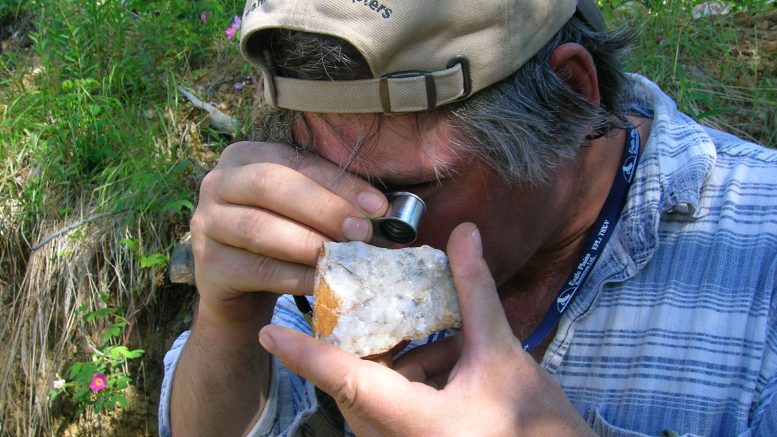
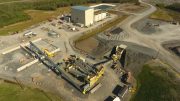
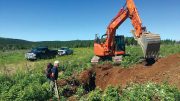
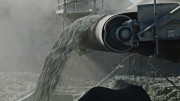
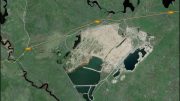
Be the first to comment on "Shawn Ryan turns attention to Labrador gold"